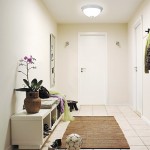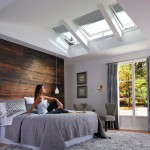A guide to windows, skylights
If your home has too small or too few windows, it can be difficult to get the natural light and ventilation you crave and need for good health. Cutting a hole in a wall or roof can be a scary prospect for homeowners, but adding windows or skylights isn’t as hard as you might think. If you’re unsure what type of window or skylight might be right for you, here’s a rundown of the basics:
Vertical windows
Unless you live in a bunker, your home already has vertical windows (in the walls) and the support structure for them was incorporated into the wall when the home was built. Replacing an existing under-sized vertical window with a larger one should be an easy task for a professional. Installing a new window where none existed before is slightly more complex. The installers may need to add support to ensure the new opening doesn’t compromise the wall’s ability to support the weight of the roof and/or story above it.
Vertical windows fall into several types, including:
Double-hung/single hung — Double-hung windows can open from the top or bottom, while single hung only open from the bottom. These are the most common types of wall windows used in modern homes.
Casement — Often, but not always, narrow and vertical, casement windows open outward using a crank handle.
Fixed — These windows don’t open. Typically, picture or bay windows are fixed.
Awning — Often used above or below fixed windows, awning windows flip outward from the top or bottom.
Sliders — These windows open by sliding either to the left or right, and they’re common in contemporary or modern designs.
Roof windows
Most traditional windows admit light at the wall level, while skylights bring light into the home from above. Roof windows are somewhat of a hybrid in that they combine some of the best qualities of both vertical windows and skylights. They are located within reach and are operated by hand, and they can provide a great view of both the landscape and sky.
Roof windows are large enough and quickly open wide enough to allow a person to easily exit a room for roof maintenance or in an emergency. This makes them a logical choice for locations where building codes require a method of egress.
Skylights
Skylights often are the daylighting solution of choice for rooms with limited wall space or where privacy is paramount (such as bathrooms and bedrooms), but they can be a practical, attractive and cost-effective way to increase natural light and passive ventilation in any room or space in the home.
New or replacement skylights are available in fixed or venting, fresh-air models. Energy Star-qualified, no-leak, solar-powered fresh-air skylights from Velux America operate by remote control to provide passive ventilation as well as natural light. Installing new skylights or replacing older glass or plastic bubble skylights with solar-powered fresh-air models, plus solar blinds, can qualify you for a 30 percent federal tax credit on the products as well as the installation costs.
Skylights also are available for rooms with no direct roof access; Sun Tunnel tubular skylights are an inexpensive way to brighten up smaller half baths, closets, hallways and other interior areas of the home. Light kits are available for 24/7 illumination. Visit whyskylights.com to learn more.
Better light from above
A study by the Danish Building Research Institute shows that roof windows and skylights provide both more light and better quality light — twice as much as vertical windows and three times as much as dormers. Skylights deliver balanced light to the core of a room and brighten the space with less glare while requiring a smaller square footage of glass.
Whether you’re planning replacement work or a new installation, professionally installed vertical windows, roof windows and skylights can help brighten your home, provide better air quality and make any space more enjoyable.
This article is courtesy of Brandpoint.

